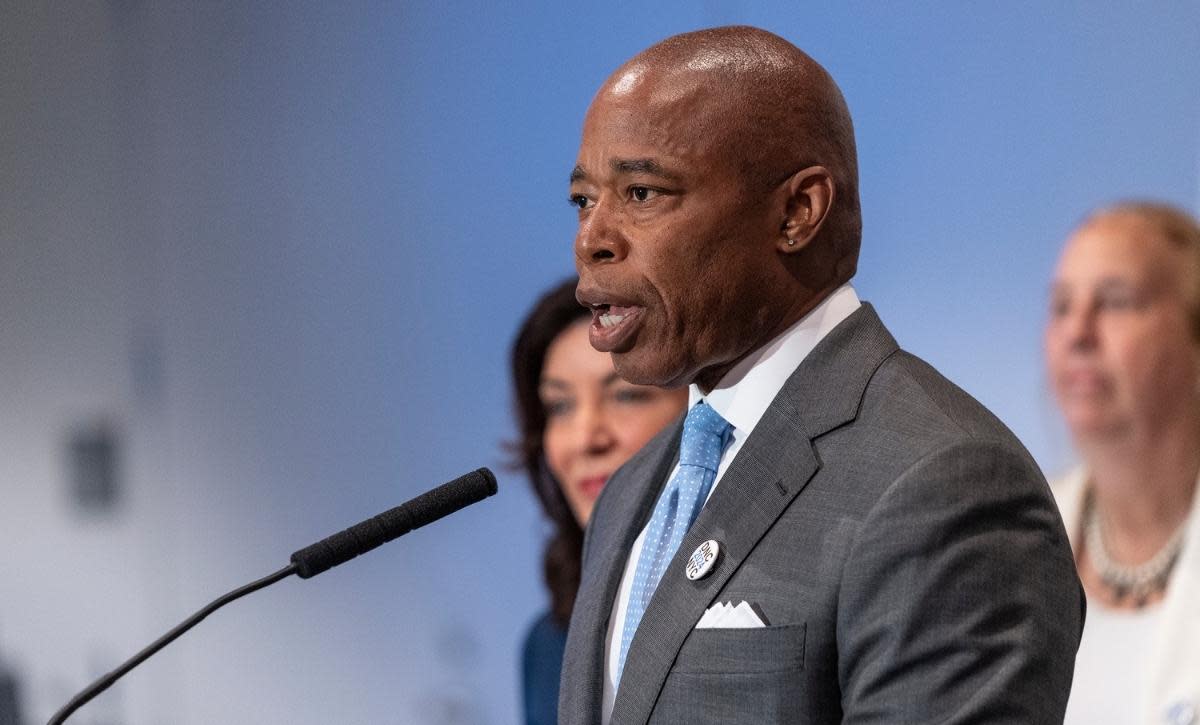Opinion: NYC Parents Rage: With No G&T Qualifying Test, Selection Process Is Chaos

- Oops!Something went wrong.Please try again later.
New York City Mayor Eric Adams assumed office promising he’d listen to what parents wanted. One of the things he heard was demand for more public school gifted-and-talented classes. So Adams reversed his predecessor’s decision to get rid of all such programming and, instead, expanded it.
What he did not reinstate was the qualifying test. Instead, all public school pre-K students would be screened by their classroom teachers, private school pre-K students who requested it would be evaluated by the city Department of Education, and children entering grades 1 through 3 would be evaluated via report cards — though parents were given no indication of how exactly those report cards would be used. Qualified students at every grade level would then be entered into a lottery, as there are always many more applicants than there are seats.
Sign up here for The 74’s daily newsletter. Donate here to support The 74's independent journalism.
“The least DOE could have done was provide clarity,” mom Maleeha Metla raged. “They randomly picked students? Lottery system? Tell parents how you got to the pool of kids getting the G&T offer!”
Once placement results were announced Aug. 3, parents who assumed their children at least had a shot at being entered into the first-through-third-grade lottery for any available G&T seats were stunned to receive letters that the student had been declared “ineligible.”
Gifted & Talented
The 74's ongoing news and opinion coverage of how schools serve gifted and talented students.
A mom who asked to only be identified as Jen said, “A number of my friends are telling me that their kids were deemed ineligible but they don’t know why. Some of their kids had all 4s” — the top grade on the student report card.
Dad Daniel McDermon couldn’t understand it, either, writing, “My youngest was deemed not eligible, and I am rather shocked. My son scored 100% on the final math assessment, began the year reading at the end-of-year level and had 4s in reading and math on his final report card. He was deemed eligible for G&T programs two years ago by the DOE’s own test.”
McDermon reached out to the department for clarification and received the following reply: The list of eligible students was determined using the following method: Students’ highest grade in each core subject was converted to a zero- through four-point scale. These core subject grades were averaged together for each student. Students within the school and grade-level were ranked based on this core subject average. Based on this ranking, the top 10% of students in your school and grade-level were identified as eligible. Report card grades were evaluated based on the most recent marking period available in April 2022.
Parents immediately cried foul — for a variety of reasons.
“For public school kids, the DOE chose to look at non-final grades from April, not the final grades filed in late June. On the other hand, for private, parochial and charter students, parents were instructed to submit their child’s grades … by July 1,” wrote a different Jen. “If my child was in private school, I could have submitted, and her eligibility would have been determined based on, final grades (all 4s) she received in late June. Instead, because she is already in public school, her non-final grades were used, making her ineligible.”
A parent who is also a teacher fumed, “You can’t compare kids in different semesters! Everyone knows that June is your best report card because teachers/schools want to demonstrate progress and growth!”
A parent who asked to remain anonymous assumed their child was being discriminated against due to disability, writing, “My child came back as “ineligible” for G&T — he is entering second grade and got all 3s and 4s in his core subjects. He had one 2 on his report card, and it was NOT in a core subject. It was in academic and personal behaviors due to the time management and organization sections. He has ADHD and an IEP, and it seems to me that if they exclude children based on this section of the report card, it would be excluding them based on their disabilities.”
Finally, yet another Jen revealed, “My son got all 4s in what I believe are the ‘core’ grades at the school, but within the subcategories, got some lower numbers. We know another child who is at a different district school whose report card didn’t show subcategories, got all 4s and got an offer. I don’t understand how the DOE can say determination is based on report card grades but then not say how.”
So not only were public school students assessed using different grades from independent, parochial and charter students, but children at different schools were evaluated differently based on whether their report cards utilized subcategory grades.
But the biggest inequity in this year’s gifted-and-talented process was that, unlike previous years, when each individual student was compared against the citywide applicant pool, this year, children were ranked only within their own schools.
Previously, kids who scored in the top 10% citywide were entered into the G&T lottery. This year, only the top 10% from each individual school were.
This means that, with the addition of subcategories, a student whose report card had all 4s might not make the cut if they were only “low 4s” in a high-performing school, while a student with all 3s in a lower-performing school would qualify. The schools.nyc.gov website has an entire report touting “Equity and Excellence for All.” How was the above process either of those things?

